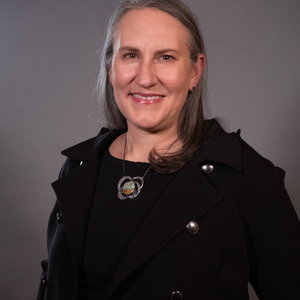Weight Loss Drugs & Eating Disorders: What Providers Need to Know About GLP-1s
Author:
Kyle Hardner
Courtney Weider
Clinically reviewed by:
Elizabeth Wassenaar, MS, MD, DFAPA, CEDS-C
Table of Contents
- What are GLP-1 meds and what do they do?
- GLP-1 meds and eating disorders: A slippery slope
- Can GLP-1s trigger a new eating disorder?
- Can GLP-1s contribute to mood and anxiety disorders?
- When is it appropriate to prescribe GLP-1s? Tips for providers
- Warning signs that GLP-1 meds may be causing disordered eating
- What you don’t know can hurt you – and your patients
Ozempic. Wegovy. Mounjaro. These days, it’s hard to watch a show, scroll through social media or open a magazine without seeing a mention of these popular weight loss drugs. The ads make them seem like harmless “miracle cures” for anyone looking to lose weight quickly. In reality, they are quite the opposite.
These medications, called GLP-1 receptor agonists (GLP-1s), have side effects that can mirror symptoms of an eating disorder, from lessened hunger cues to rapid weight loss and more. This is why they have grown in popularity but it’s also what makes them potentially harmful to anyone at risk for an eating disorder, living with an active eating disorder or in recovery.
“We are concerned that GLP-1s can trigger or exacerbate eating disorders, particularly among adolescents whose brains are not yet fully developed,” says Elizabeth Wassenaar, MS, MD, CEDS-S, DFAPA (she/her), regional medical director at Eating Recovery Center. “In addition, we are already observing rates of relapse to disordered eating patterns among patients using GLP-1s.”

What are GLP-1 meds and what do they do?
The human body naturally releases the hormone GLP-1 after we eat. The popular weight loss drugs known as GLP-1s mimic this hormone response. Because these drugs suppress appetite and increase feelings of fullness, they can help individuals with type 2 diabetes regulate their blood sugar and were approved by the U.S. Food and Drug Administration (FDA) in 2017 for this purpose [1].
Shortly after these medications were introduced, the manufacturers realized they had an undeniable side effect: weight loss. Some providers began prescribing them off-label for this purpose. Then, in June 2021, the FDA formally approved these drugs for chronic weight management [1].
GLP-1 meds and eating disorders: A slippery slope
GLP-1 medications change the way a person experiences hunger and fullness, making them especially dangerous for people who have a history of disordered eating or eating disorders.
“Imagine someone with a history of an eating disorder who begins taking GLP-1s, and their hunger cues disappear,” Dr. Wassenaar explains. “Suddenly they’re at serious risk for a relapse.”
Sometimes those relapses cause more medical or psychiatric complications than their past struggle with an eating disorder.
“I’ve seen cases where someone said GLP-1s resolved their type 2 diabetes, but also triggered an eating disorder relapse so severe that they needed to return to a higher level of care,” Dr. Wassenaar says.
Perpetuation of harmful diet culture
When prescribed as a lifestyle intervention, GLP-1s perpetuate harmful diet culture by amplifying the ongoing myth that “thinner is better.” They further the lies that diet culture teaches people about what their body should look like and what they should (or should not) be eating.
“Anytime something reinforces the mistaken idea that the only way to be healthy is to be thinner—and that all larger bodies are unhealthy—it is perpetuating harm,” Dr. Wassenaar says.
Can GLP-1s like Ozempic trigger a new eating disorder?
We’ve established that GLP-1s are causing relapses for those in eating disorder recovery. But can they trigger an eating disorder in those who have never had one before?
Short answer, it’s definitely a risk. While eating disorders have multiple causes, common triggers include stress and malnutrition, along with a family history of eating disorders or disordered eating.
“Combine all those factors with a medication that induces people to eat less, and you have the perfect recipe for developing an eating disorder,” Dr. Wassenaar says.
Can GLP-1s contribute to mood and anxiety disorders?
There is no reliable, long-term data on GLP-1s, and the impact they have on mood and anxiety disorders is not yet well understood. However, anecdotal data indicates that GLP-1s may accelerate these mental health concerns.
“Some providers have reported decreased anxiety and depression in patients taking GLP-1s, while others have reported increased lethargy, depression and suicidal thoughts,” Dr. Wassenaar says.
Additionally, GLP-1s are contraindicated for individuals who have certain types of endocrine cancers. It’s not yet known how these medications affect someone’s pancreas over the long term.
When is it appropriate to prescribe GLP-1s? Tips for providers
Note: At ERC, we do not believe that weight is an indicator of health and do not agree with prescribing GLP-1s for weight loss. Read more about weight stigma in health care here.
Providers who choose to prescribe GLP-1s to treat type 2 diabetes should proceed with caution. A few guidelines:
- Screen patients for eating disorders before prescribing. We do not recommend prescribing GLP-1s to those who have a history of eating disorders.
- Consider other classes of medications to treat type 2 diabetes. “Many other types of medications have been well validated and studied for decades, and they do not trigger eating disorder relapses,” Dr. Wassenaar says.
- Educate yourself about weight loss drugs and share what you learn. Read up on all the potential side effects of GLP-1s. Also, sit down with your clients and review the drug information package insert with them so they know all the potential risks.
- Encourage people to nourish their bodies. Stress the importance of adequate nutrition. Motivate them to eat regularly and drink enough water. Encourage them to support their mental health and know the warning signs
If you discover (or even suspect) your patients with eating disorders are already using GLP-1s, start the conversation with them. Make sure they know the risks and monitor them closely for signs of relapse.
Warning signs that GLP-1 meds may be causing disordered eating
Look for these potential red flags that indicate someone may be slipping into disordered eating or an eating disorder:
- Increase in negative thoughts. Watch for signs of anxiety, body image disorders and comparisons. Notice when someone start to repeat the lies their eating disorder told them, such as “skinnier is healthier.”
- Excessive weight checking. Ask how often they’re checking their weight (they’re often required to do so at least once a week when taking GLP-1s) and if they’re preoccupied with how much weight they’ve lost.
- Other cognitive and emotional signs. Be sure someone can adhere to a basic meal plan. Ask them questions to understand how much food is impacting their choices, such as “How often do you think about food?”
GLP-1s reducing the “non-stop food chatter”
GLP-1s may also mask the true causes of disordered eating patterns like compulsive overeating.
“Anecdotally, some taking GLP-1s say that the ‘non-stop food chatter’ in their brain quiets down,” Dr. Wassenaar says. “If providers prescribe GLP-1s without understanding what’s driving that food chatter or without giving people additional resources, it will be like putting a Band-Aid over a wound that’s not actually healing.”
Gastroparesis: A serious GLP-1 side effect
Gastroparesis, a condition marked by the slowing of an individual’s GI tract, is one of the most common side effects of GLP-1s. It makes someone feel uncomfortably full. In severe cases, gastroparesis can progress to nausea and involuntary vomiting, symptoms that correlate with certain types of eating disorders.
“Even more concerning is that some patients say their gastroparesis-related symptoms persisted even after they stopped taking GLP-1s,” Dr. Wassenaar says.
What you don’t know can hurt you – and your patients
While we remain curious about how GLP-1s may be useful as research evolves, the real harm they are doing to the eating disorder community must be acknowledged. We encourage all providers to keep up on the latest studies so they can protect their patients from relapsing into an eating disorder, which is one of the deadliest of all mental health conditions.
“I worry that GLP-1s could have a similar impact on the eating disorder community as opioids did on people in chronic pain,” Dr. Wassenaar cautions. “We may not know the true harm for many years, and by then, countless people will have suffered from preventable mental illness. The only way to stop this from happening is to understand the dangers now and educate people early and often about the realities of GLP-1s.”
Questions about our approach to eating disorder treatment? Learn how to refer a patient to Eating Recovery Center here.
Related Reading
- Stepping Up for Eating Disorder Recovery: 7 Ways to Help Your Client Progress
- Ozempic and Eating Disorders: The Risks of Weight Loss Drugs
- GLP-1s, Diabetes, Eating Disorders and Health Risks [Podcast]
- Laxatives and Weight Loss: A Cause for Concern
- What to Do if Your Doctor Tells You to Lose Weight
- Energy Drinks and Eating Disorders: Is There a Link?
Sources
U.S. Food and Drug Administration, FDA approved new drug treatment for chronic weight management, first since 2014. Published June 4, 2021. Accessed June 26, 2024.
Struggling with an eating disorder?
One conversation can make all the difference. Connect with us today.
Get Help NowConnect With Us
Written by
Written by
Written by
Elizabeth Wassenaar, MS, MD, DFAPA, CEDS-C



